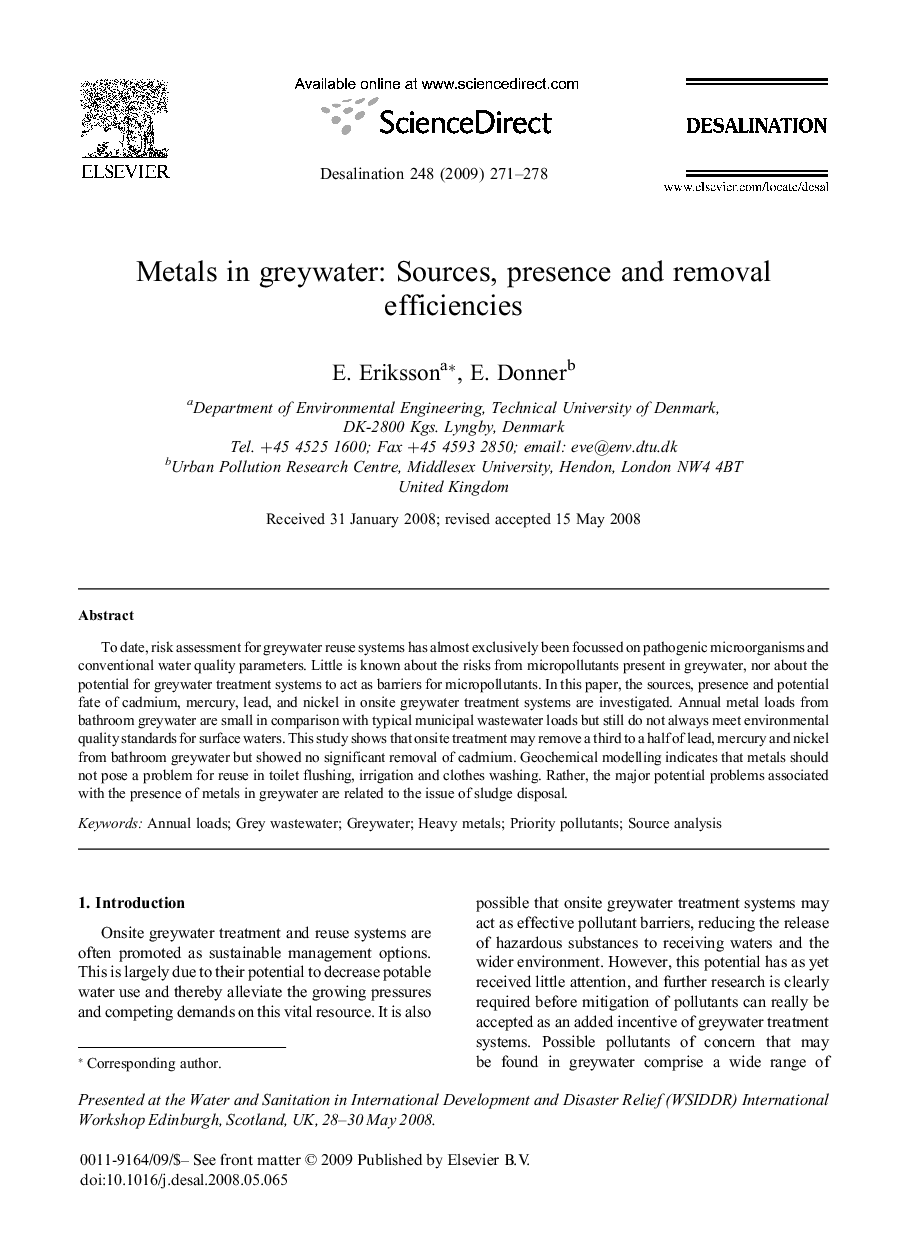| Article ID | Journal | Published Year | Pages | File Type |
|---|---|---|---|---|
| 626378 | Desalination | 2009 | 8 Pages |
To date, risk assessment for greywater reuse systems has almost exclusively been focussed on pathogenic microorganisms and conventional water quality parameters. Little is known about the risks from micropollutants present in greywater, nor about the potential for greywater treatment systems to act as barriers for micropollutants. In this paper, the sources, presence and potential fate of cadmium, mercury, lead, and nickel in onsite greywater treatment systems are investigated. Annual metal loads from bathroom greywater are small in comparison with typical municipal wastewater loads but still do not always meet environmental quality standards for surface waters. This study shows that onsite treatment may remove a third to a half of lead, mercury and nickel from bathroom greywater but showed no significant removal of cadmium. Geochemical modelling indicates that metals should not pose a problem for reuse in toilet flushing, irrigation and clothes washing. Rather, the major potential problems associated with the presence of metals in greywater are related to the issue of sludge disposal.
